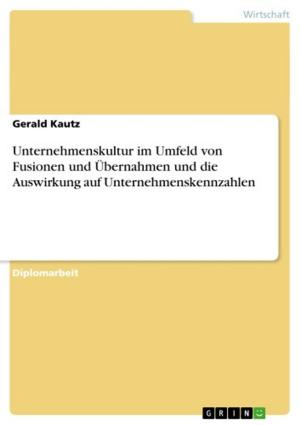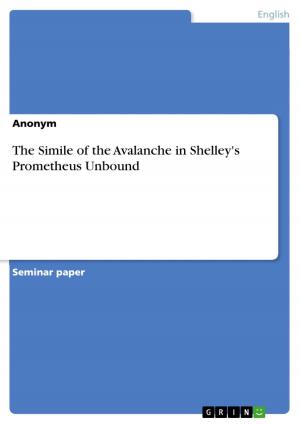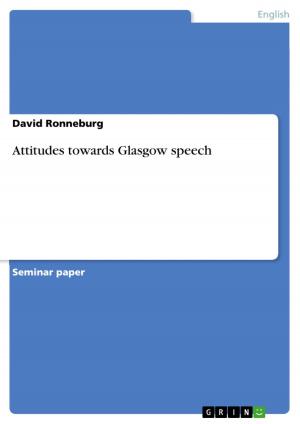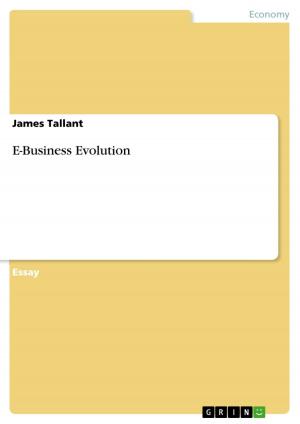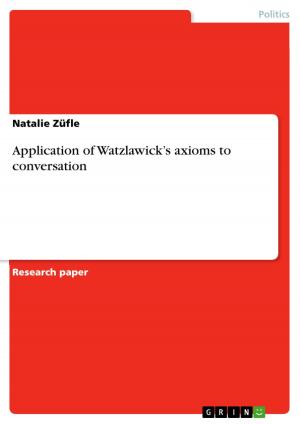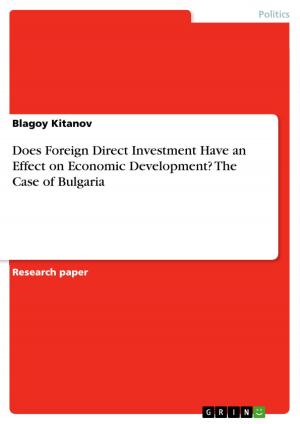Symbols in Context - The Mystic Egg in Doris Lessing's The Memoirs of a Survivor
The Mystic Egg in Doris Lessing's The Memoirs of a Survivor
Fiction & Literature, Literary Theory & Criticism, British| Author: | Kata Udvarhelyi | ISBN: | 9783640279289 |
| Publisher: | GRIN Publishing | Publication: | March 5, 2009 |
| Imprint: | GRIN Publishing | Language: | English |
| Author: | Kata Udvarhelyi |
| ISBN: | 9783640279289 |
| Publisher: | GRIN Publishing |
| Publication: | March 5, 2009 |
| Imprint: | GRIN Publishing |
| Language: | English |
Seminar paper from the year 2008 in the subject English Language and Literature Studies - Literature, grade: 1,3, University of Passau (Philosophische Fakultät, Lehrstuhl für Englische Literatur und Kultur), course: Modern Dystopias, 11 entries in the bibliography, language: English, abstract: There are few contemporary writers, who are inspired by so many different ideologies and diverse disciplines in their lifelong career, as the Novel-Prize winner Doris Lessing. Her works are characterised principally by the philosophy of Sufism, communist ideas and the theories of S. Freud and of C.G. Jung. Her literary works are held in high esteem by young and old, mystics and realists, feminists and anti-feminists and by readers in socialist and capitalist countries alike. She has without doubt an extraordinary personality. [...] As Lessing herself confirms, symbols become transmitters of abstractions and may develop into significant stylistic devices. For this reason, the present essay focuses on the appearance, significance and possible meaning of the chief and most complex symbol used in this novel: the mystic egg. As Wilson has also pointed out (vgl. Wilson n.d.:1), only a few scholars have been dealing with this issue before, without being able to define a precise explanation of the symbol. It remains, therefore, a great challenge to analyse it in further detail. The present essay aims to encompass the challenging and broad field of symbols related to the eggs that emerge in the novel. First, universal signs associated to eggs are going to be presented, in order to provide a general overview of the development of the ancient image in the context of the novel. In the subsequent part, the three major scenes are going to be analysed in detail, where the egg is mentioned: first, related to the other key symbol of the novel, namely to the wall; second, appearing as a white, and finally as a giant black egg. For better understanding of the symbols, they are going to be explained in the context of the novel. The paper ends with a short summary and concluding remarks. Particular attention is also devoted to the language applied, as the close examination of expressions reveals and becomes the prior transmitter of the meaning of any literature. The utilisation of language and dream helps Lessing's protagonists (vgl. Saint Andrews 1986: 113) to discover the truth beyond the visible materialisation of sole words and the rational mind.
Seminar paper from the year 2008 in the subject English Language and Literature Studies - Literature, grade: 1,3, University of Passau (Philosophische Fakultät, Lehrstuhl für Englische Literatur und Kultur), course: Modern Dystopias, 11 entries in the bibliography, language: English, abstract: There are few contemporary writers, who are inspired by so many different ideologies and diverse disciplines in their lifelong career, as the Novel-Prize winner Doris Lessing. Her works are characterised principally by the philosophy of Sufism, communist ideas and the theories of S. Freud and of C.G. Jung. Her literary works are held in high esteem by young and old, mystics and realists, feminists and anti-feminists and by readers in socialist and capitalist countries alike. She has without doubt an extraordinary personality. [...] As Lessing herself confirms, symbols become transmitters of abstractions and may develop into significant stylistic devices. For this reason, the present essay focuses on the appearance, significance and possible meaning of the chief and most complex symbol used in this novel: the mystic egg. As Wilson has also pointed out (vgl. Wilson n.d.:1), only a few scholars have been dealing with this issue before, without being able to define a precise explanation of the symbol. It remains, therefore, a great challenge to analyse it in further detail. The present essay aims to encompass the challenging and broad field of symbols related to the eggs that emerge in the novel. First, universal signs associated to eggs are going to be presented, in order to provide a general overview of the development of the ancient image in the context of the novel. In the subsequent part, the three major scenes are going to be analysed in detail, where the egg is mentioned: first, related to the other key symbol of the novel, namely to the wall; second, appearing as a white, and finally as a giant black egg. For better understanding of the symbols, they are going to be explained in the context of the novel. The paper ends with a short summary and concluding remarks. Particular attention is also devoted to the language applied, as the close examination of expressions reveals and becomes the prior transmitter of the meaning of any literature. The utilisation of language and dream helps Lessing's protagonists (vgl. Saint Andrews 1986: 113) to discover the truth beyond the visible materialisation of sole words and the rational mind.






